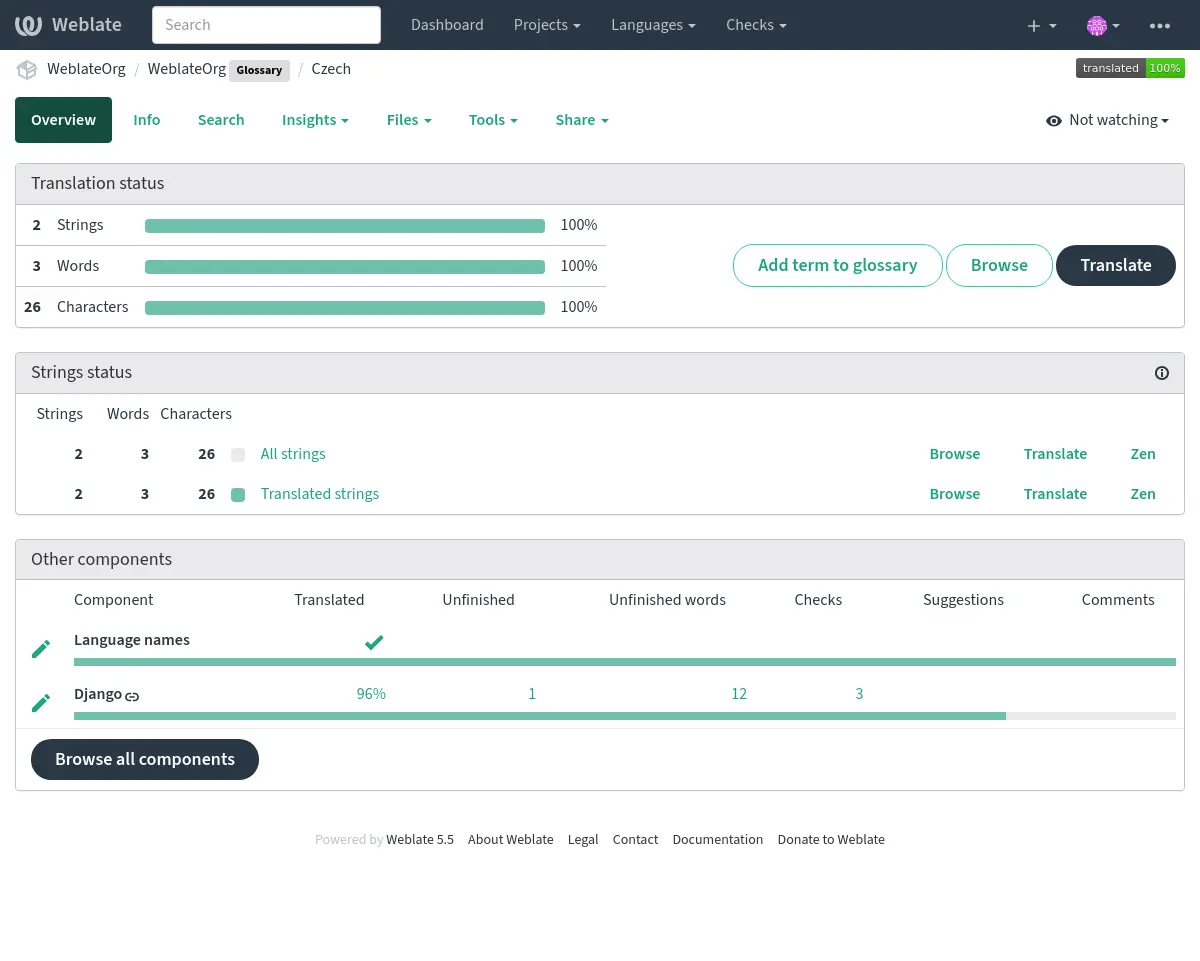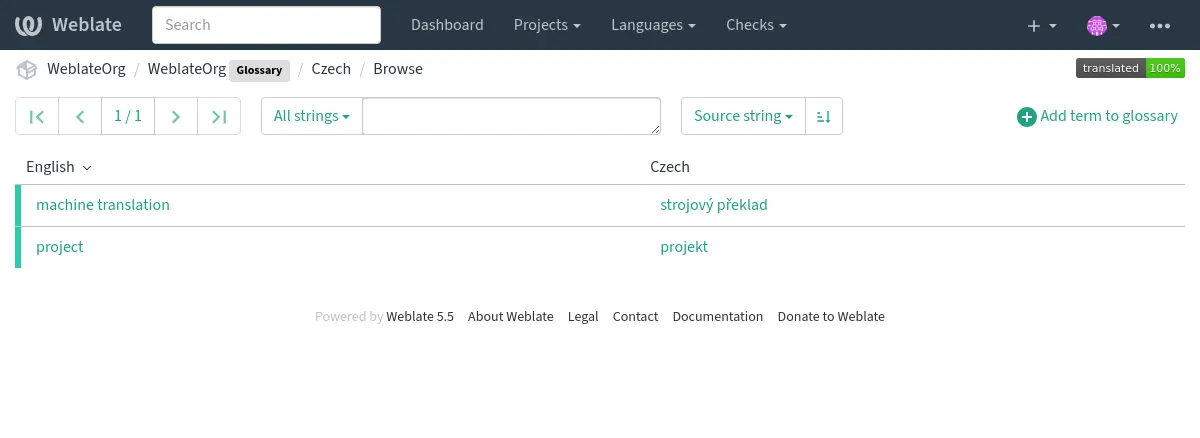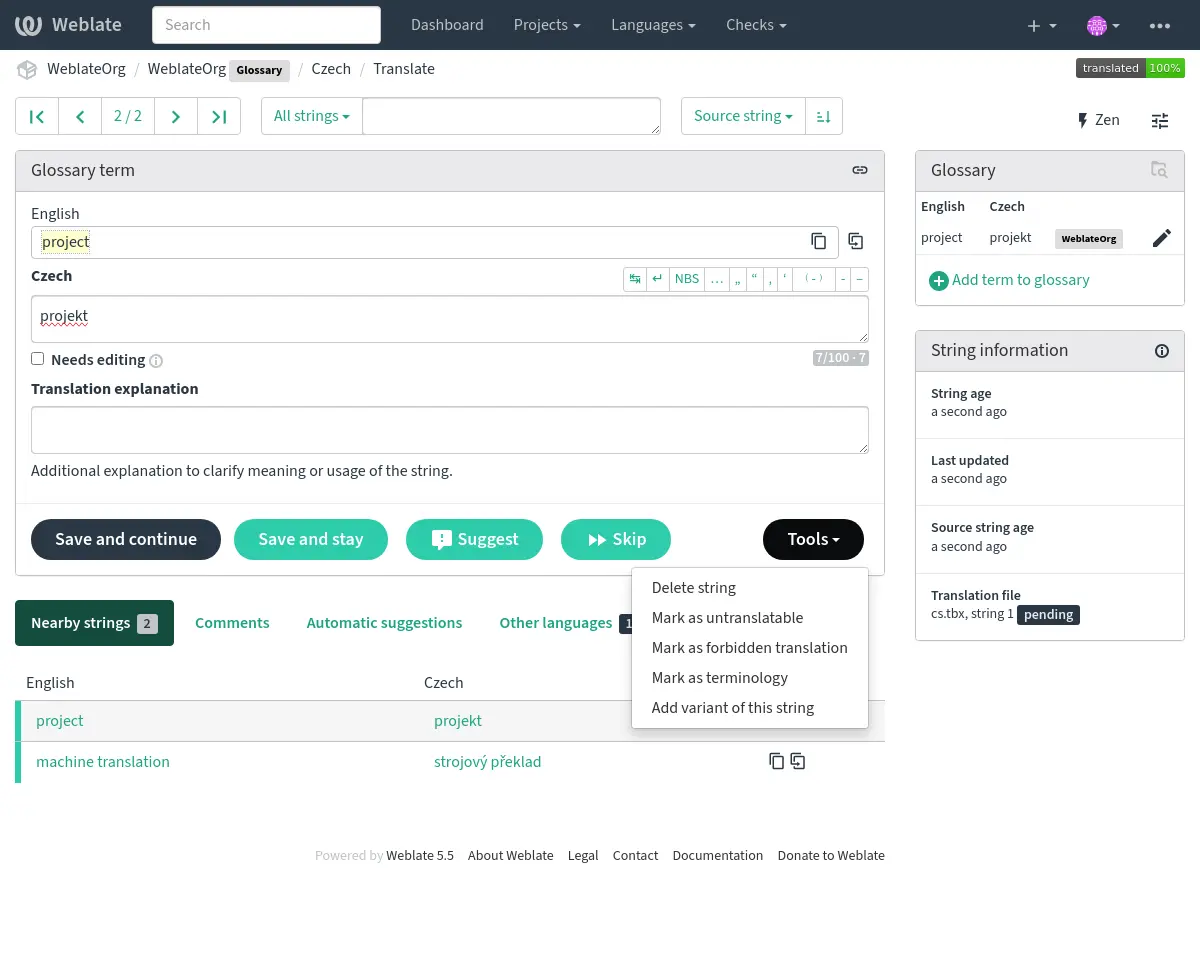Glossaire¶
Each project can include one or more glossaries as a shorthand for storing terminology. Glossary easify maintaining consistency of the translation.
A glossary for each language can be managed on its own, but they are stored together as a single component which helps project admins and multilingual translators to maintain some cross-language consistency as well. Terms from the glossary containing words from the currently translated string are displayed in the sidebar of the translation editor.
Indication
The glossary terms are not used in quality checks unless you enable that, see Non conforme au glossaire for more information.
Gestion des glossaires¶
Modifié dans la version 4.5: Glossaries are now regular translation components and you can use all Weblate features on them — commenting, storing in a remote repository, or adding explanations.
Use any component as a glossary by turning on Utiliser comme glossaire. You can create multiple glossaries for one project.
An empty glossary for a given project is automatically created with the project. Glossaries are shared among all components of the same project, and optionally with other projects using Partager dans les projets from the respective glossary component.
The glossary component looks like any other component in Weblate with added colored label:

Vous pouvez parcourir tous les termes du glossaire :

ou les modifier comme n’importe quelle traduction.
Glossary terms¶
Les termes du glossaire sont traduits de la même manière que les chaînes de caractères ordinaires. Vous pouvez activer des fonctionnalités supplémentaires en utilisant le menu Outils pour chaque terme.

Untranslatable terms¶
Added in version 4.5.
Flagging certain glossary term translations read-only by bulk-editing, typing in the flag, or
by using Tools ↓ Mark as untranslatable means they can not
be translated. Use this for brand names or other terms that should not be changed in other languages.
Such terms are visually highlighted in the glossary sidebar.
Voir aussi
Forbidden translations¶
Added in version 4.5.
Flagging certain glossary term translations as forbidden, by bulk-editing,
typing in the flag, or by using Tools ↓ Mark as forbidden translation
means they are not to be used. Use this to clarify translation when some words are
ambiguous or could have unexpected meanings.
Voir aussi
Terminologie¶
Added in version 4.5.
Flagging certain glossary terms as terminology by bulk-editing, typing in the flag,
or by using Tools ↓ Mark as terminology adds entries for them
to all languages in the glossary. Use this for important terms that should
be well thought out, and retain a consistent meaning across all languages.
Voir aussi
Variantes¶
Variants are a generic way to group strings together. All term variants are listed in the glossary sidebar when translating.
Indication
You can use this to add abbreviations or shorter expressions for a term.
Voir aussi
Glossaries in automatic suggestion¶
Added in version 5.3.
Following automatic suggestion services utilize glossaries during the translation:
The glossary is processed before exposed to the service:
Duplicate source entries are not allowed, any additional entries with the same source are skipped.
Any control characters and leading and trailing whitespace are stripped.
Forbidden translations are skipped.
Note
Many services store glossaries server-side and enforce limit on the number of saved glossaries. Weblate always deletes the oldest glossary if it runs out of space.